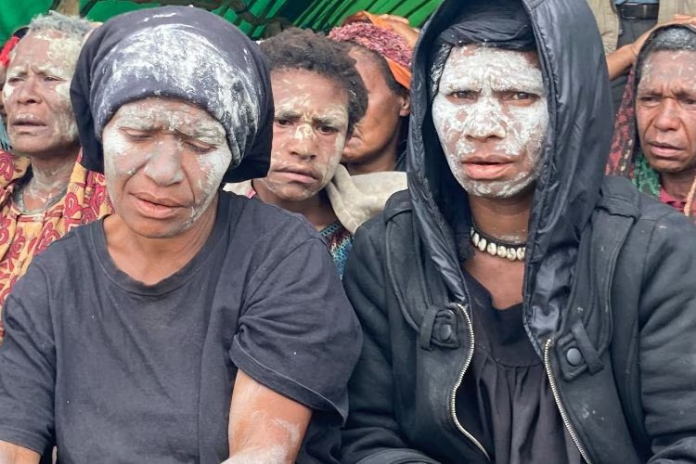Papua New Guinea Prime Minister James Marape visited for the first time on Friday the site of a massive landslide estimated to have buried hundreds of villagers a week ago in the island nation’s South Pacific mountainous regions, where the ground is too unstable for heavy earth-moving machines to help clear.
Authorities are still trying to determine how many people are buried under parts of the mountain that collapsed on the village of Yambali in the remote Enga region on May 24.
The UN estimates that 670 villagers died in the disaster, which immediately displaced 1,650 survivors. The country’s government told the UN that it believed more than 2,000 people were trapped underground. Only six bodies have been recovered.
Marape apologised to residents for not arriving earlier. He said:
I’m sorry. The country is with you in your time of sorrow.
He pledged 20 million kina ($5.1 million) for emergency response and initial recovery efforts. Marape also inspected the disaster site by helicopter, the UN migration agency said.
Number of casualties could rise
The Enga Provincial Disaster Committee (EPDC) said on May 29 that the landslide affected up to 7,500 people and destroyed 1,400 houses. The EPDC said reconstruction work, which requires heavy machinery and technical expertise, is hampered by difficult conditions as the area is covered with rocks and is experiencing constant ground movement.
On Thursday, government and army geotechnical experts were studying the stability of the debris that hit Yambali, Enga provincial administrator Sandis Tsaka said. Australian and New Zealand experts are arriving on Friday.
Two excavators and a bulldozer are ready to begin excavation on one side of the rubble, which is more than 150 metres (500 feet) wide, while another excavator and bulldozer are also ready on the other side, Tsaka said. Since the disaster, villagers have been digging with shovels, farm tools and their bare hands in search of survivors or dead bodies.
